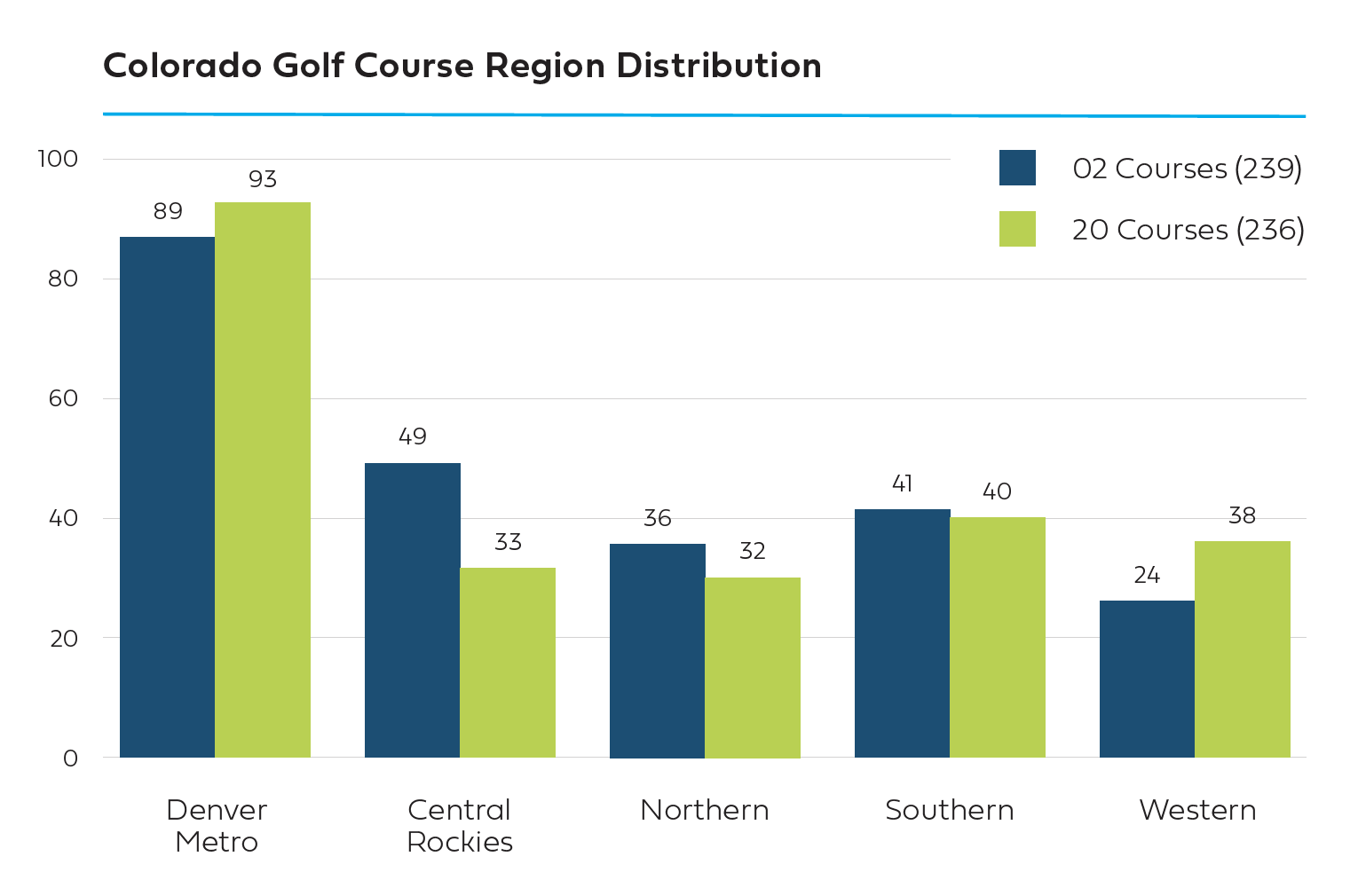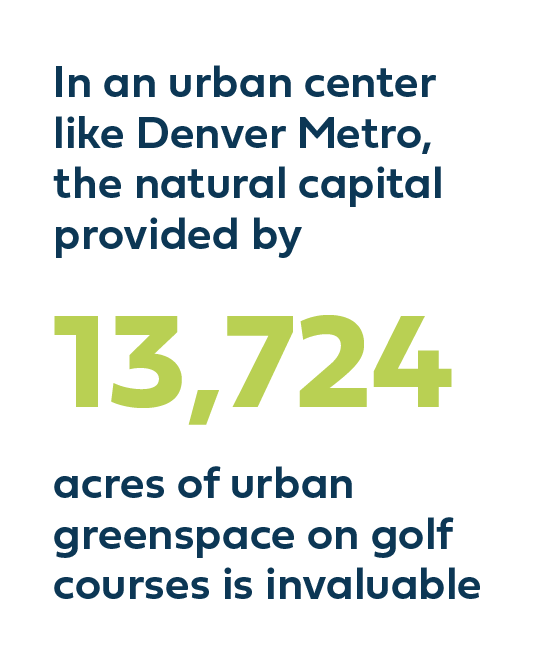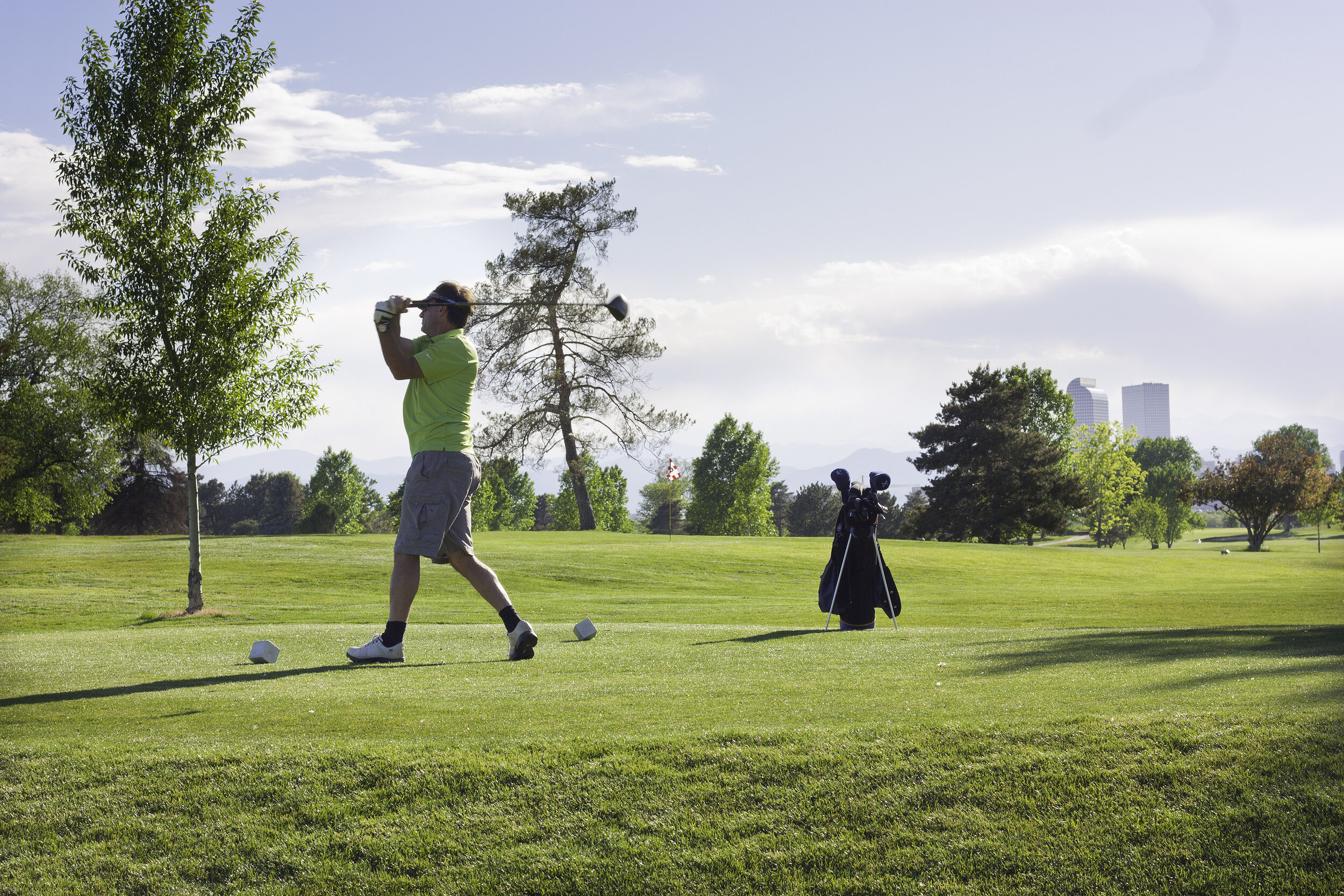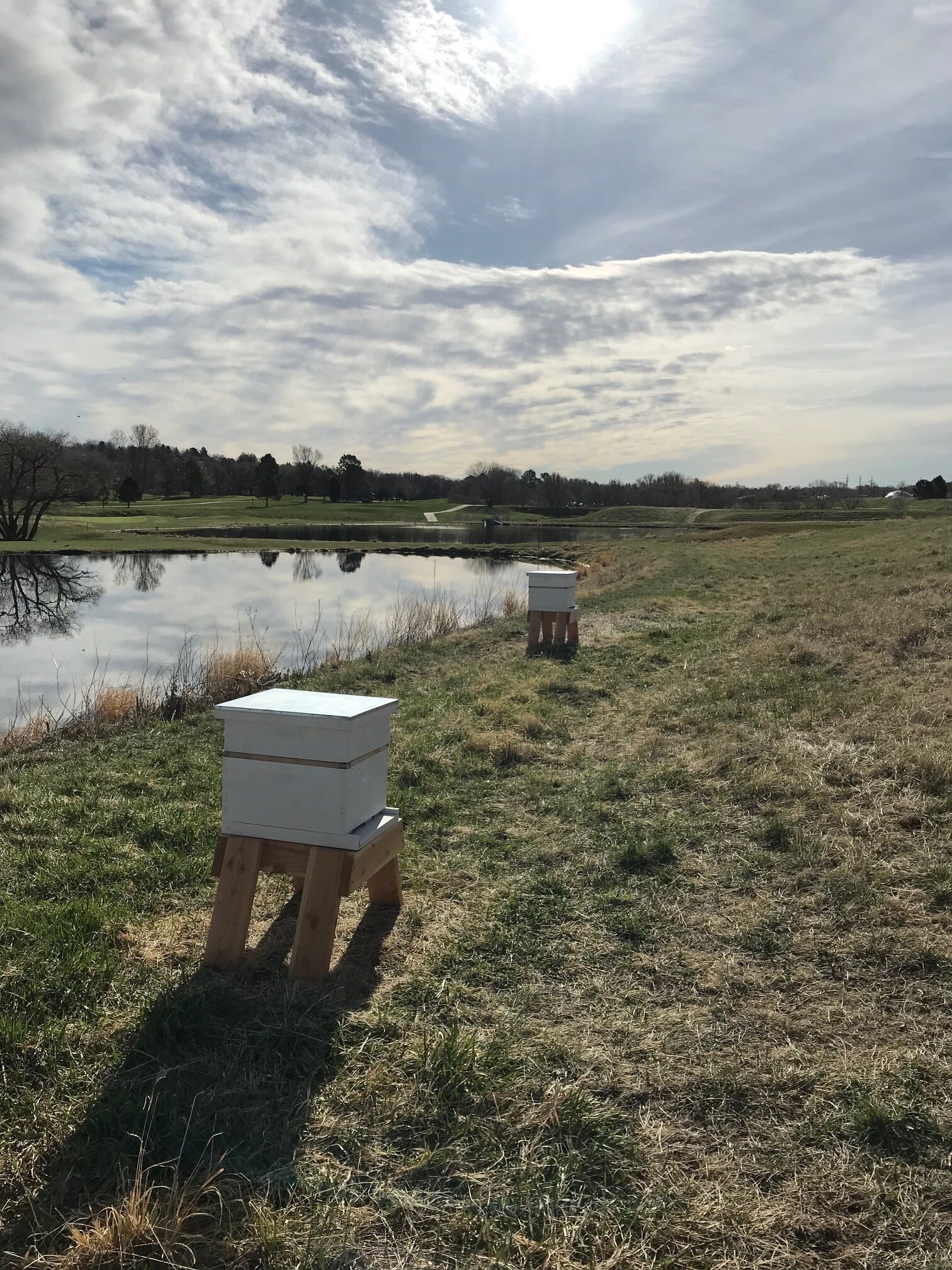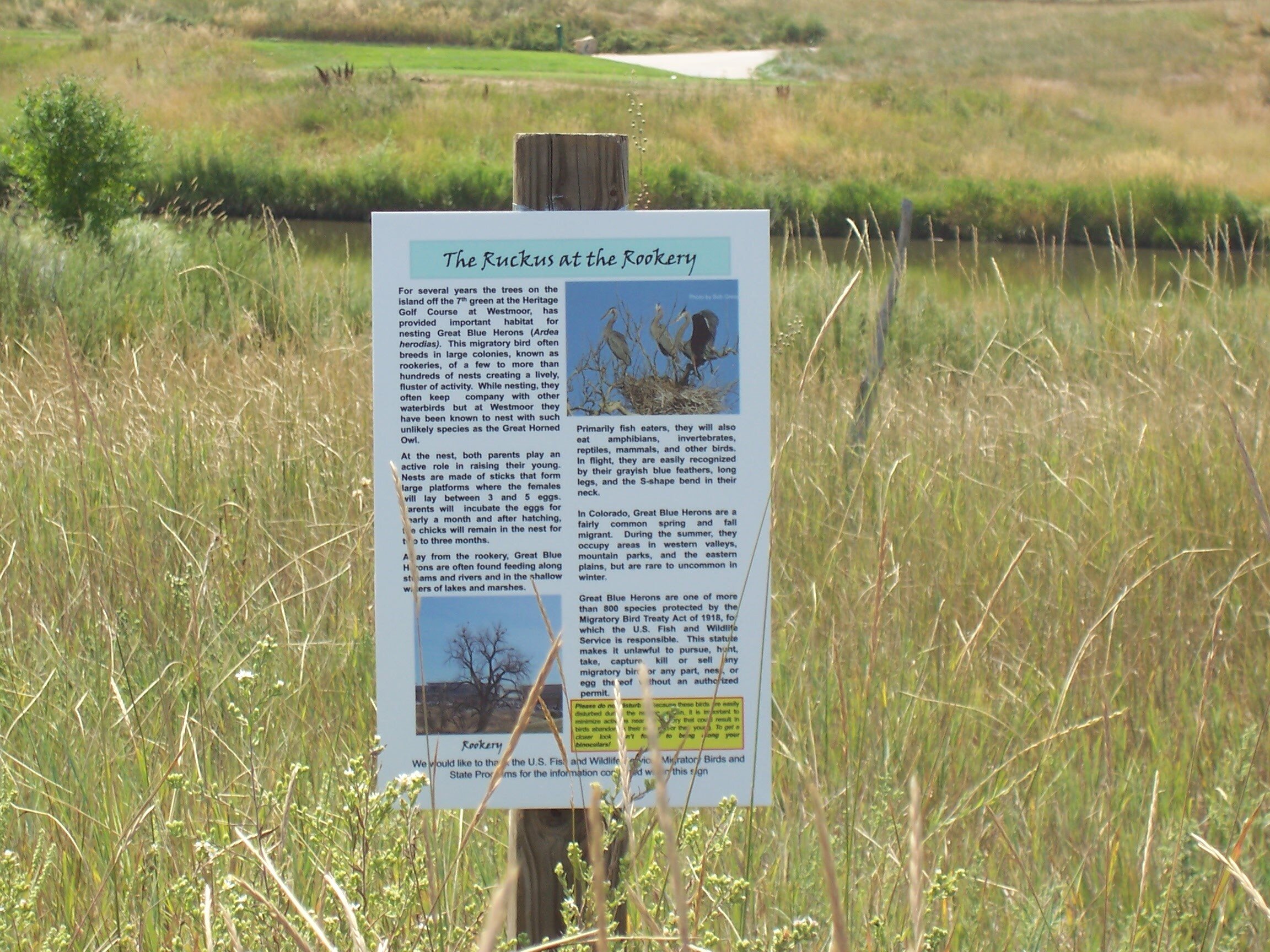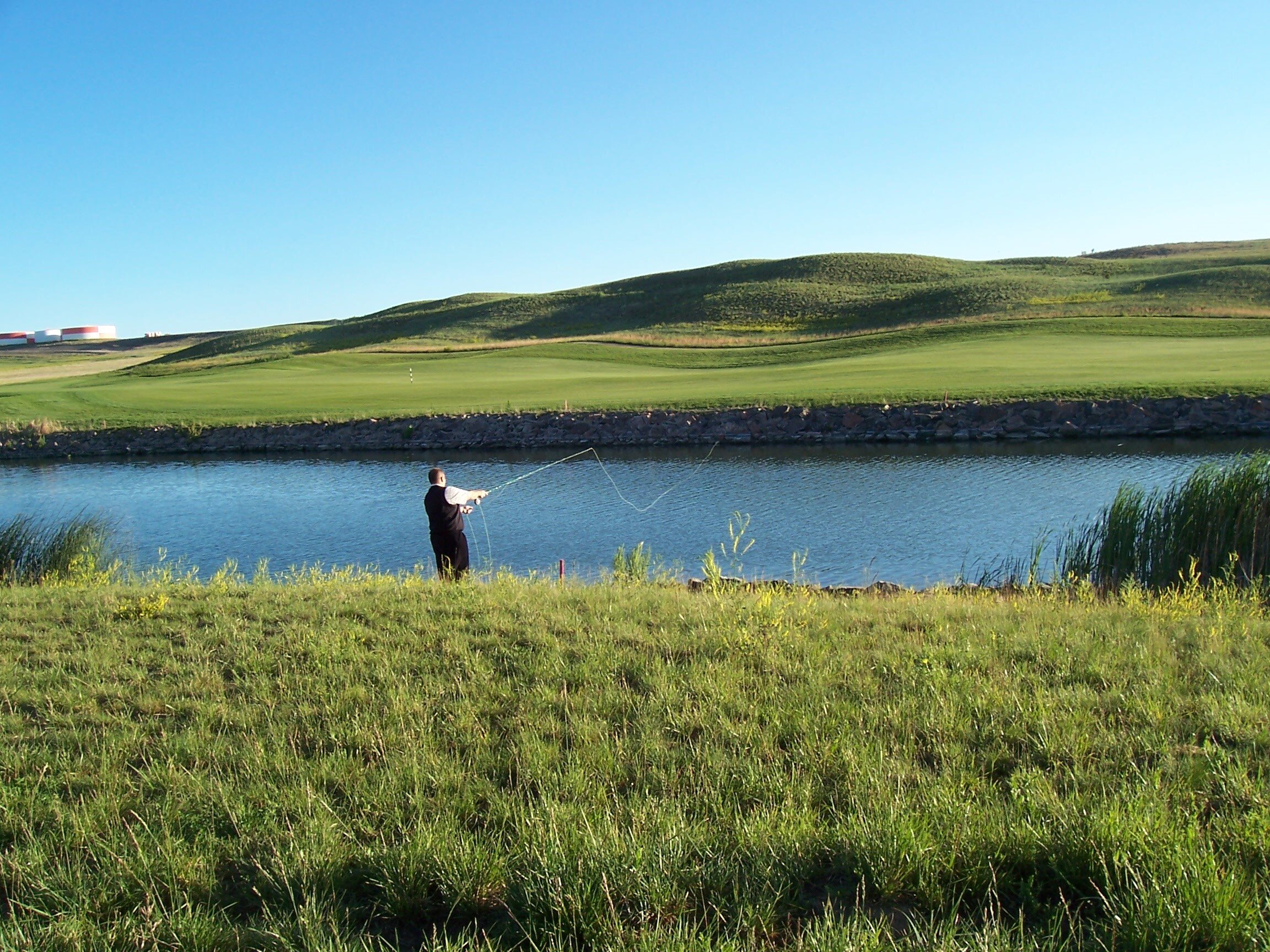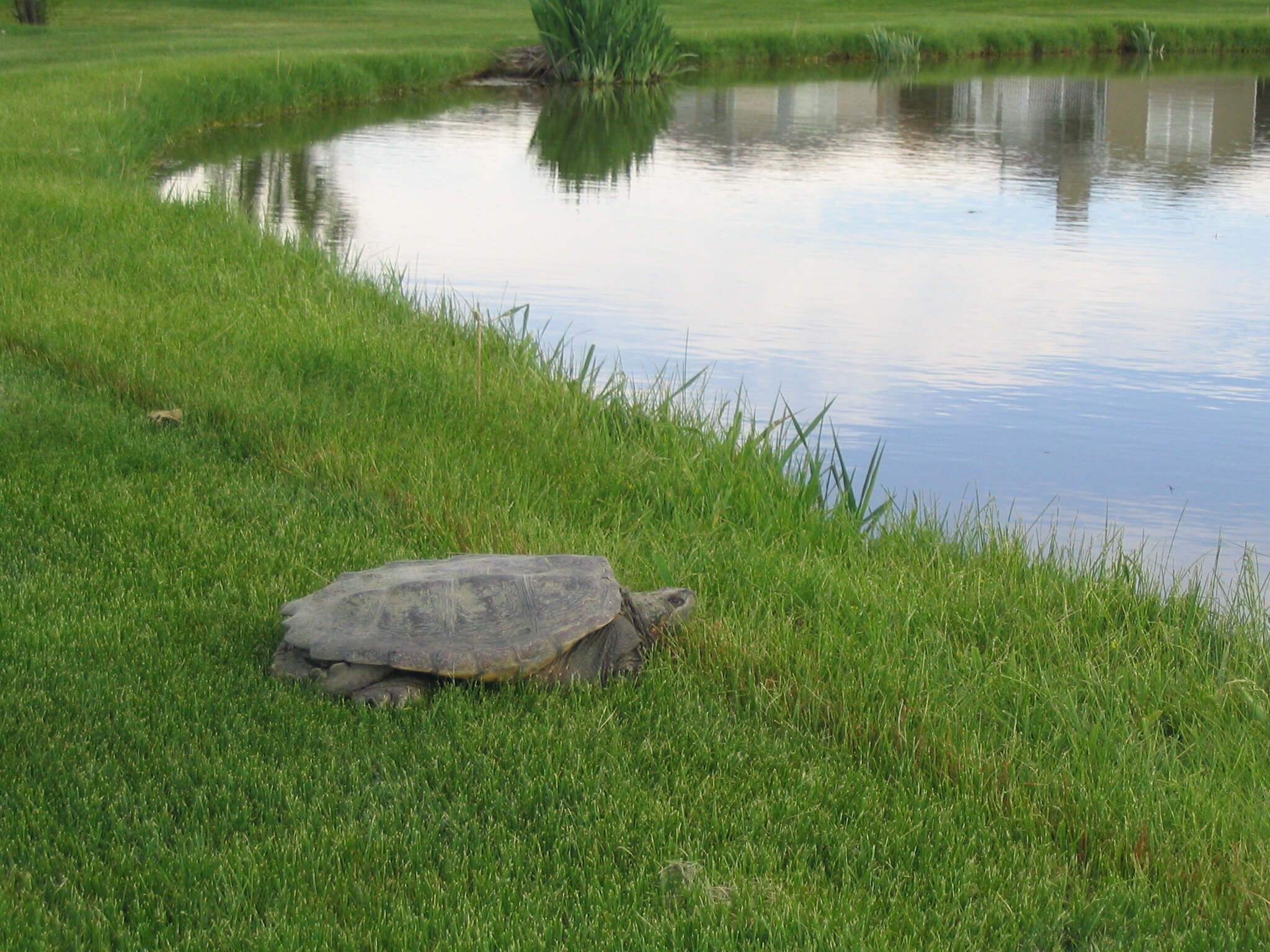Colorado Golf Greenspace, Quality of Life, and Ecosystem Services
The natural environment referred to as greenspace includes vegetation, open space (greens, tees, fairways, rough, native rough, other) and blue space such as streams, lakes, wetlands, and ponds.[1] The 236 golf courses in Colorado provide 33,061 acres of greenspace that deliver valuable ecosystem services to communities throughout the state. These natural areas filter surface water runoff, filter air pollutants, enhance quality of life, support wildlife habitats, reduce the urban heat island effect, and contribute to the overall health and well-being of Coloradans; resulting in reduced infrastructure, expenses, and healthcare care costs.
Regions are designated based on a Colorado Golf Coalition database of Colorado golf courses and geographic regions.
About 40% of Colorado golf courses are located in the Denver Metro region; the remaining are spread nearly evenly between the Western Slope, Southern, Northern, and Mountain regions.
There could have been regional mapping differences between 2002 and 2020 between Mountain and Western Slope with more courses assigned to the Western Slope region in 2020.
Two regions have updated names, the Central Rockies region was previously categorized as Mountain and Western was previously categorized as Western Slope.
Surface Water Management
Surface water includes rainwater and stormwater that flows off impervious surfaces such as roads, parking lots, and sidewalks. Stormwater can cause flooding, erosion, and reduced water quality by carrying pollutants with it. Golf course turfgrass reduces stormwater by slowing runoff, capturing precipitation, and reducing water volume that flows into the stormwater system.
Reducing Urban Heat Island Effects
The city of Denver ranked third worst nationwide for the effects from Urban Heat Island (UHI) – representing the difference between urban versus rural temperatures. Impervious surfaces (e.g. roads, buildings, sidewalks, parking lots, etc.) absorb rather than reflect heat, causing surface and ambient temperatures to rise, which results in heat stress, increased air pollutants, impaired water quality, negative health impacts, and higher energy consumption. [2]
A Need for Greenspace in Urban Environments
As impervious surfaces rise, golf course greenspace becomes increasingly important.
Impervious surfaces in Denver are projected to increase from 49% in 2019 to 57% in 2020 and 67% by 2040, based on 2018 and 2019 reports from Denver Public Works.
Urban golf courses help cool cities; the CGC Denver Metro region contributes 13,724 acres of urban greenspace from golf courses to help reduce UHI temperatures.
Additional Quality of Life & Ecosystem Services
Health, Fitness, and Wellness
Golf courses provide nearly five miles of exercise, a total of 10,000 steps, with 2,000 calories burned from walking an 18-hole course; increased physical activity supports health, prevention, and well-being to reduce risk of chronic disease and associated medical costs. Studies have shown that walking in nature provides benefits such as lowering stress, improving immune system, and combating depression. [5, 6, 7]
The Junior Golf Alliance of Colorado (JGAC) was established by the Colorado Section of the PGA and the Colorado Golf Association to streamline the junior golf process, build junior golf ranks, promote fitness and competitive play, and create new excitement with the four Major JGAC Colorado Championships.
PGA Jr. League Golf is a fun, social, and inclusive opportunity for boys and girls ages 13 and under to learn and enjoy the game of golf. PGA Jr. League Golf offers a focus on fun, recreation, good health, and sportsmanship. Developmental in nature, this program works to offer an alternative, social golf format with an approach highlighting team play versus individual competition.
The Colorado PGA REACH Foundation works daily to make a difference in local communities. Programming ensures that regardless of age or background, cost will never inhibit one’s involvement and enjoyment of golf; programs are geared toward inclusion, workforce diversity, women’s leadership, veterans, and service-disabled veterans.
Helping the Community, Wildlife, and Environment
Golf courses support wildlife habitats, often maintaining critical links between nature and urban environments. Numerous Colorado golf courses provide homes for bird and bat houses, beehives, and butterfly gardens to encourage pollinators which help sustain Colorado agriculture.
Wetlands comprise approximately 4% of Colorado golf course acreage which is designated as sensitive areas to support aquatic life; an additional 4% of acreage includes water acres such as ponds and streams.
Turfgrass, landscaping, and trees on golf courses remove air pollutants that can endanger human health.
Colorado golf courses support STEM programs with local schools, hosting golf course field trips with experiential learning focused on science and math; many events are co-hosted with the support of the First Green, an initiative of the Environmental Institute of Golf (EIFG), the philanthropic arm of the GCSAA.
Golf maintenance BMPs are utilized during planning, design, construction, and ongoing operations to protect and encourage natural, flourishing habitats, nesting sites, and wildlife corridors.
[1] Lucie Taylor and Dieter F. Hochuli. (February 2017). Landscape and Urban Planning. Volume 158. “Defining greenspace: Multiple uses across multiple disciplines.” Retrieved from https://www.sciencedirect.com/science/article/pii/S0169204616302146
[2] Nationwide Urban Heat Island Rankings. (2019). Retrieved from https://www.climatecentral.org/news/urban-heat-islands-threaten-us-health-17919
[3] Ashlee Grace. (March 9, 2018). RMLUI Conference. https://www.law.du.edu/documents/rmlui/conference/powerpoints/2018/GraceA_ AShotofVitaminN.pdf
[4] Sarah Anderson and Brian Wethington. (May 21, 2019). City and County of Denver Green Infrastructure Program. Retrieved from https://www.epa. gov/sites/production/files/2019-06/documents/sea_gig_presentation_190515_reduced.pdf
[5] The Trust for Public Land. (January 2017). The economic benefits of parks and recreation in Colorado Springs. Retrieved from https://tpl.org/colorado-springs
[6] Golf Health & Wellness. (2020). Retrieved from http://wearegolf.org/health-wellness/
[7] Jim Gorant. USGA Golf Journal. (Spring 2021). Play Well. Retrieved from https://www.bluetoad.com/publication/?m=62593&i=698812&p=57&pp=1


